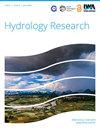The phenomenon of drought in Ethiopia: Historical evolution and climatic forcing
IF 2.6
4区 环境科学与生态学
Q2 WATER RESOURCES
引用次数: 0
Abstract
This study examines drought patterns in Ethiopia's 12 major river basins from 1981 to 2018 using the Standardized Precipitation Index (SPI) and the Standardized Precipitation Evapotranspiration Index (SPEI). Both indices reveal historical drought episodes with slight variations, with significant differences in 1984, 2009, and 2015. Except for the Wabi-Shebelle catchment in southern Ethiopia, all river basins show an increasing trend in SPI12 and SPEI12 indices. The eastern and central regions experience more drought according to SPEI3. Seasonal correlations show that during the March–May rainy season, precipitation is negatively correlated with the Indian Ocean Dipole (IOD) index, while in the June–September season, it negatively correlates with Nino 3.4 and positively with IOD. The study also found that El Niño leads to less rainfall in the Ethiopian highlands, while La Niña results in more rainfall in the central and northern highlands but less in the south.埃塞俄比亚的干旱现象:历史演变和气候因素
本研究使用标准化降水指数(SPI)和标准化降水蒸散指数(SPEI)研究了 1981 年至 2018 年埃塞俄比亚 12 个主要河流流域的干旱模式。这两个指数显示,历史上的干旱事件略有不同,1984 年、2009 年和 2015 年差异显著。除埃塞俄比亚南部的 Wabi-Shebelle 流域外,所有流域的 SPI12 和 SPEI12 指数均呈上升趋势。根据 SPEI3,东部和中部地区经历了更多的干旱。季节相关性显示,在 3-5 月雨季,降水量与印度洋偶极子指数呈负相关,而在 6-9 月雨季,降水量与尼诺 3.4 呈负相关,与印度洋偶极子指数呈正相关。研究还发现,厄尔尼诺现象导致埃塞俄比亚高原降雨量减少,而拉尼娜现象则导致中部和北部高原降雨量增加,但南部降雨量减少。
本文章由计算机程序翻译,如有差异,请以英文原文为准。
求助全文
约1分钟内获得全文
求助全文
来源期刊

Hydrology Research
WATER RESOURCES-
CiteScore
5.00
自引率
7.40%
发文量
0
审稿时长
3.8 months
期刊介绍:
Hydrology Research provides international coverage on all aspects of hydrology in its widest sense, and welcomes the submission of papers from across the subject. While emphasis is placed on studies of the hydrological cycle, the Journal also covers the physics and chemistry of water. Hydrology Research is intended to be a link between basic hydrological research and the practical application of scientific results within the broad field of water management.
 求助内容:
求助内容: 应助结果提醒方式:
应助结果提醒方式:


